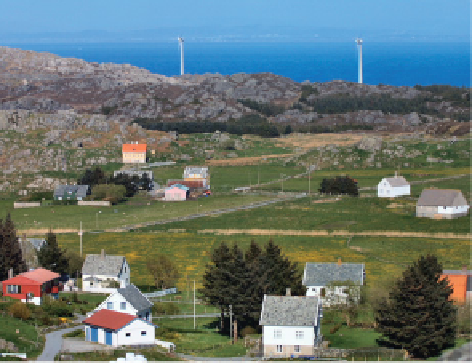Environmental Engineering Reference
In-Depth Information
started in 2004 two 600-kilowatt wind turbines are providing ten of the households
with their complete supply of electricity (Figure 14.18). The electricity demand in
Norwegian households is generally rather high as it is also often used to provide
electric heating.
Figure 14.18
Two wind turbines on the Norwegian island of Utsira guarantee a carbon-free electricity
supply for ten households.
Source: Norsk Hydro ASA, www.hydro.com.
In contrast with a large interconnected grid system, this type of island grid offers
some major technical challenges. For example, if two houses switch on their electric
heating at the same time, major fl uctuations will occur in the grid. Although the
region is very windy, for safety reasons the wind turbines do not deliver any elec-
tricity during the rare periods of calm or when extreme storms occur. A reliable
electricity supply also has to be available for these periods.
For this purpose a module for energy storage was tested in Utsira for future energy
supply. When surplus capacity exists, an electrolyzer converts the wind power
into hydrogen and oxygen. When the wind turbines supply too little electricity, a
60-kilowatt fuel cell makes up the difference using the stored hydrogen. In addition,
when minor fl uctuations occur, a fl ywheel storage device provides for a stable grid.
For cost reasons the testing of the hydrogen storage technology was fi rst limited to
two years and was then extended in 2006.
14.6 All's Well that Ends Well
The variety of possibilities for using renewable energies described in this topic, not
least the examples in this chapter, have shown that it is actually unnecessary to
endanger our future existence through an unrestrained use of crude oil, natural gas,
coal and nuclear energy. The effects of fossil energy on the world's climate are
already noticeable. The consequences of climate change will soon be beyond our


